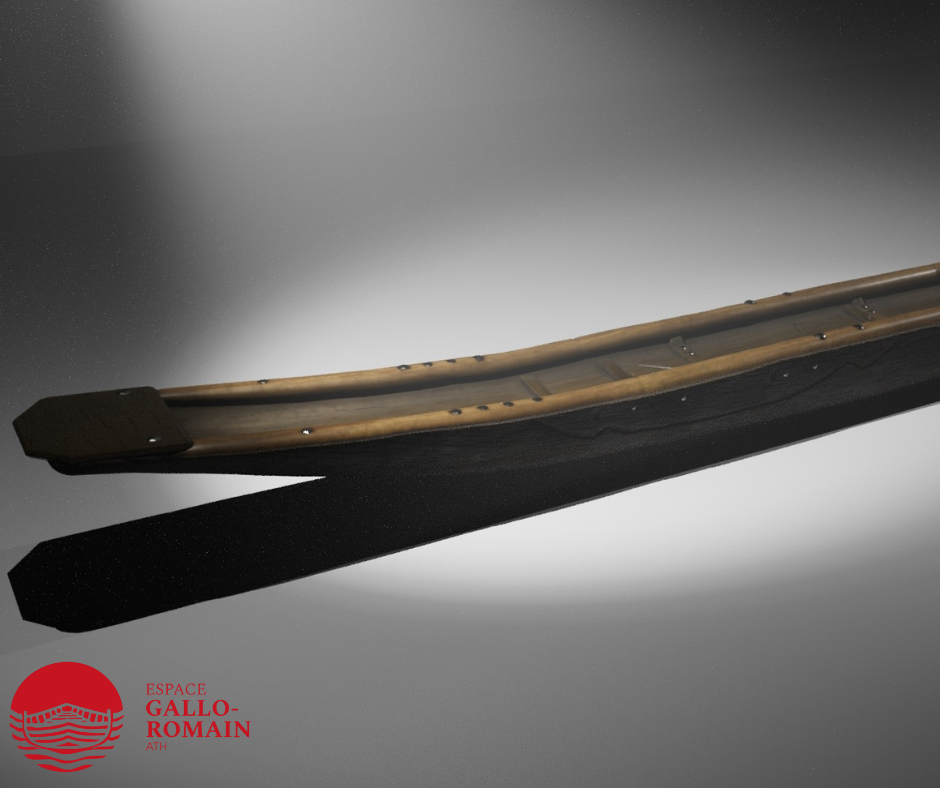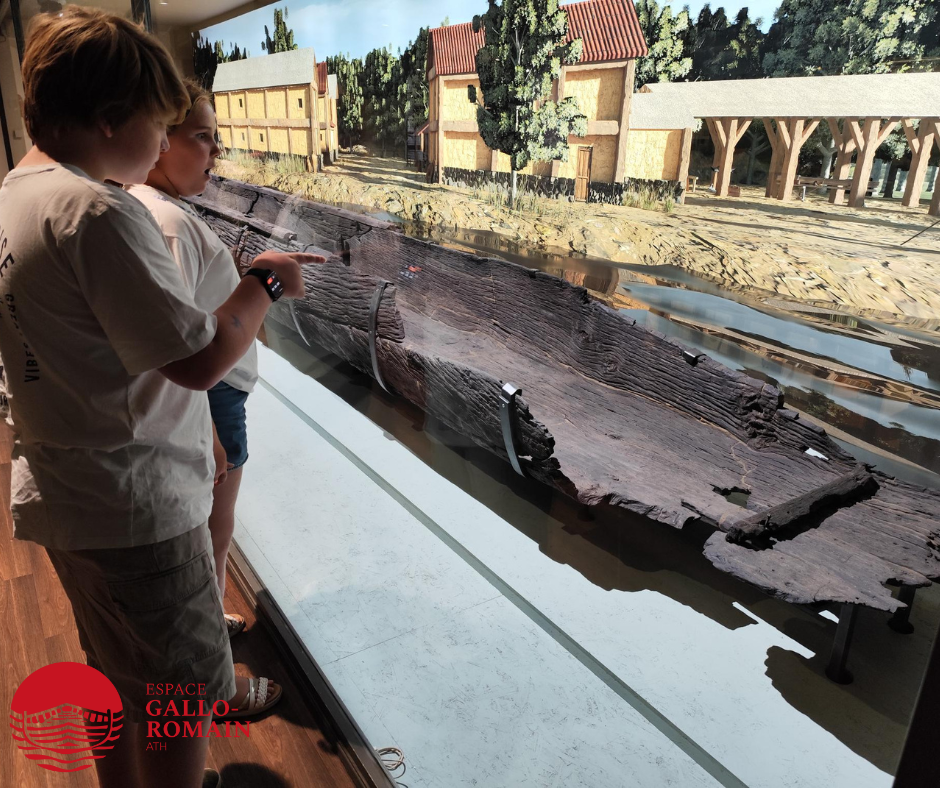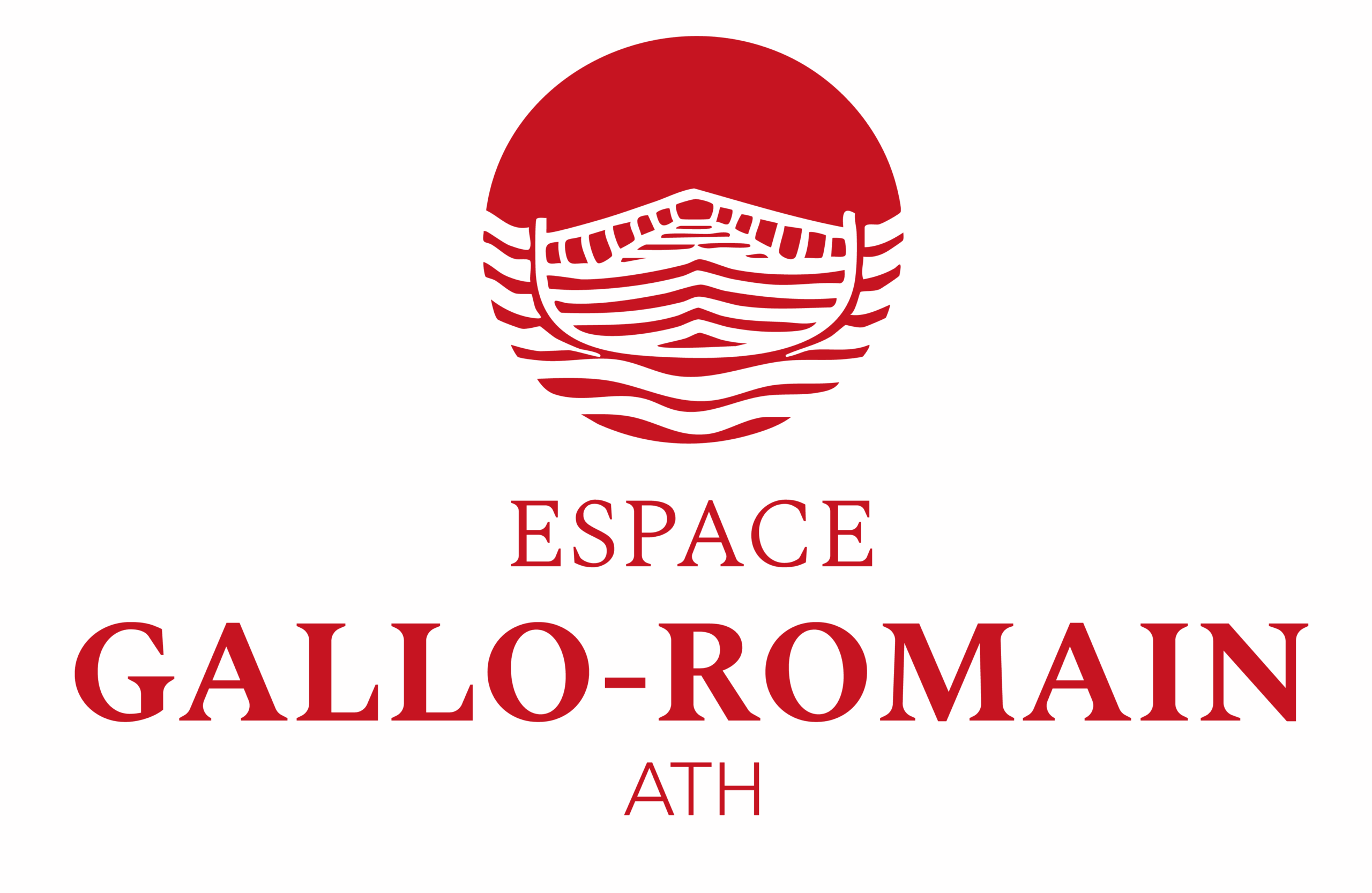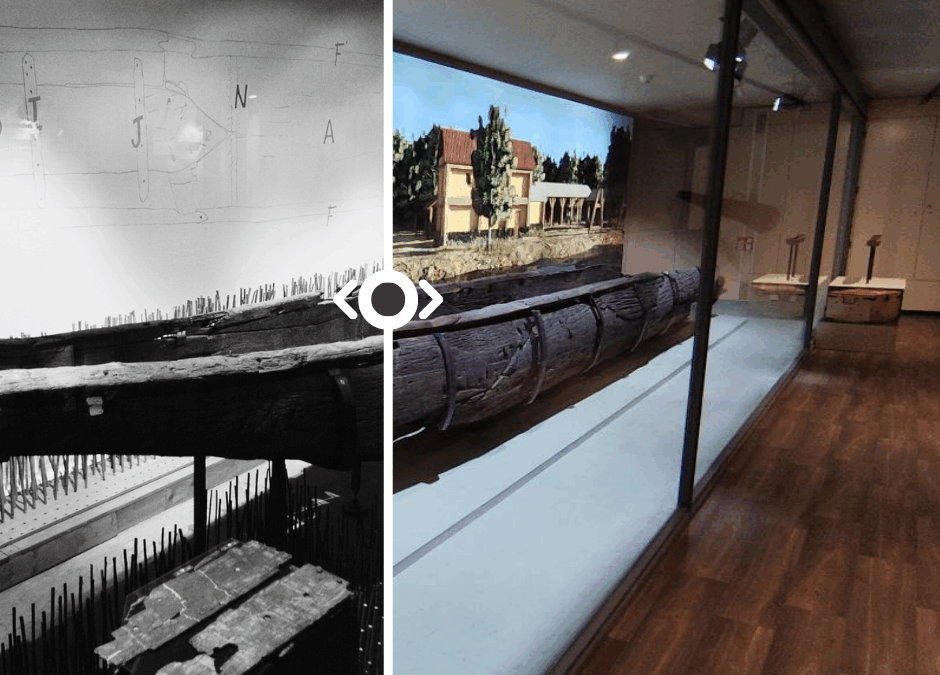The Gallo-Roman dugout canoe is undoubtedly one of the museum’s most iconic treasures. Today, it is presented to you in a new light: a redesigned display case that is brighter, more modern and even closer to its history.
This new setting has been designed to showcase this unique object, immersing you in its story, as if you were embarking on a journey through time yourself.

The Pommeroeul dugout canoe
The dugout canoe (dated by dendrochronology to 67 AD) is in very good condition. Made of oak, it is 9.7 metres long and would have been 11.5 or even 12 metres long. It is known as a ‘monoxyle’ (“mono” = one + ‘xyle’ = wood), as it is made from a hollowed-out tree trunk, reinforced in certain places.
The canoe was used in Roman times on rivers for travel, fishing and transporting light goods. It is a remarkable example of early river transport and is one of the major pieces in the collections of the Gallo-Roman Museum.
Pommeroeul
In the summer of 1975, during excavation work on the Hensies-Pommeroeul canal in Pommerœul, archaeological objects were unearthed at a depth of 2.5 metres. Archaeological excavations revealed a site occupied from the Neolithic period to Roman times. A Gallo-Roman port settlement developed there at the intersection of the Bavay-Blicquy road and the river La Haine. This location gave it a prominent role in trade and craftsmanship.
The Pommeroeul site is known for its unusual archaeological finds, such as numerous shoes and, above all, Gallo-Roman boats, including a barge and a dugout canoe.



Recent Comments